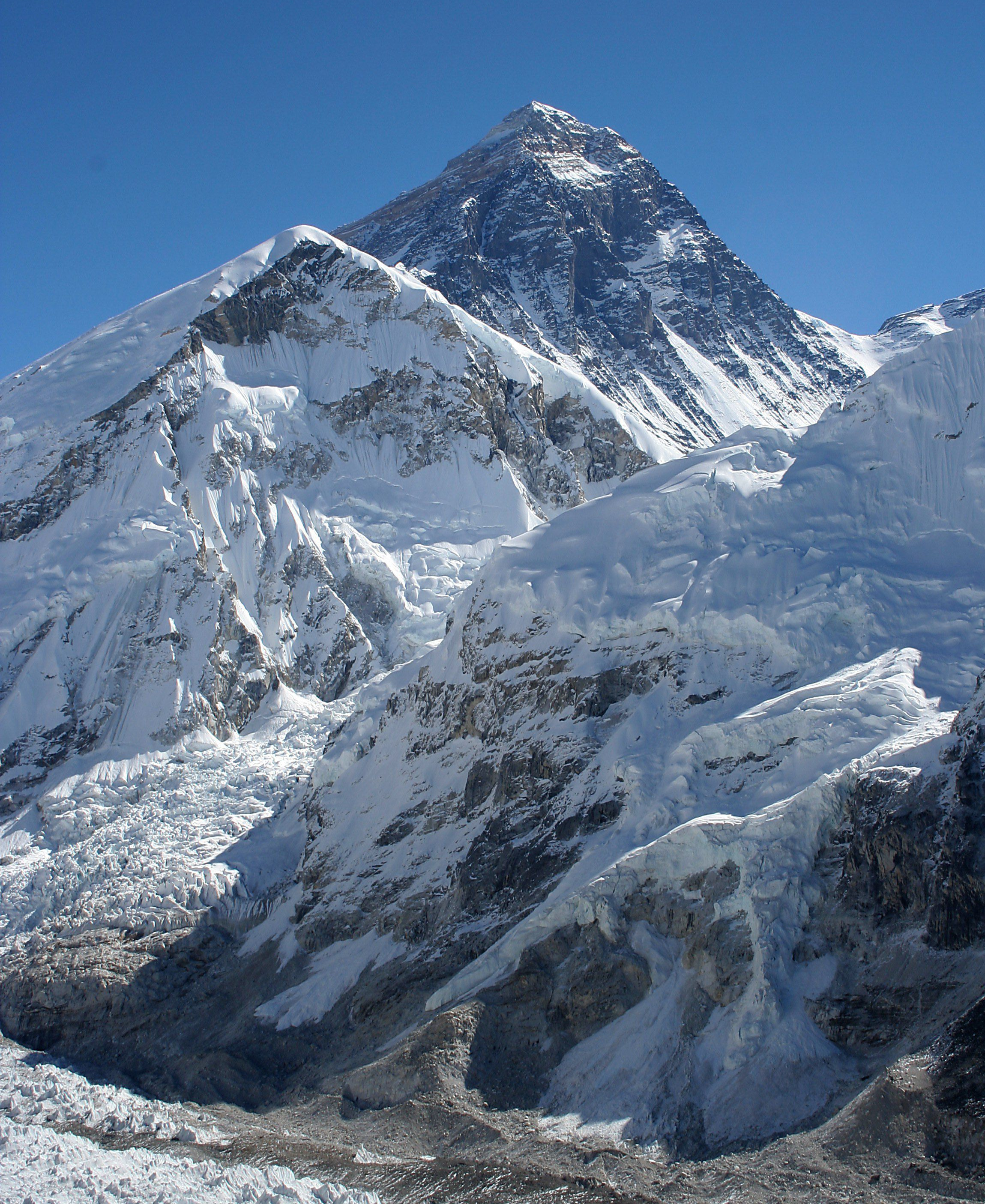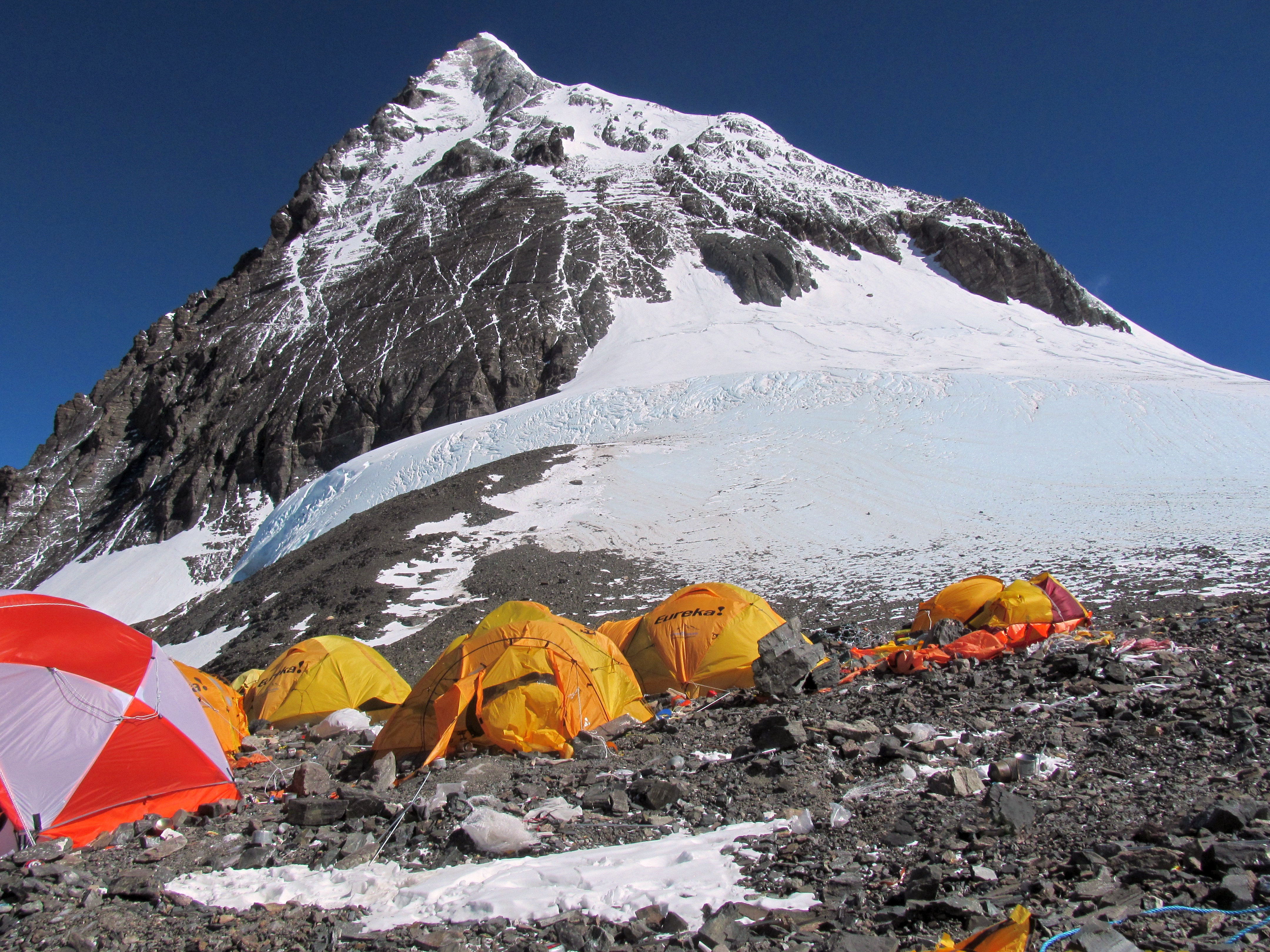South Summit (Everest) on:
[Wikipedia]
[Google]
[Amazon]
The South Summit of Mount Everest in the


PBS article about different locations on Everest including the South summit
{{Eight-thousander Mount Everest Mountains of the Province No. 1 Mountains of Tibet Eight-thousanders of the Himalayas
Himalayas
The Himalayas, or Himalaya (; ; ), is a mountain range in Asia, separating the plains of the Indian subcontinent from the Tibetan Plateau. The range has some of the planet's highest peaks, including the very highest, Mount Everest. Over 100 ...
is a subsidiary peak to the primary peak of Mount Everest
Mount Everest (; Tibetan: ''Chomolungma'' ; ) is Earth's highest mountain above sea level, located in the Mahalangur Himal sub-range of the Himalayas. The China–Nepal border runs across its summit point. Its elevation (snow heig ...
. Although the South Summit's elevation above sea level of is higher than the second-highest mountain on Earth, K2 (whose summit is above sea level), it is not considered a separate mountain as its prominence
In topography, prominence (also referred to as autonomous height, relative height, and shoulder drop in US English, and drop or relative height in British English) measures the height of a mountain or hill's summit relative to the lowest contou ...
is only 11 meters. The primary peak of Mount Everest is elevation above sea level.
Overview
The peak is a dome-shaped peak of snow and ice, and is connected to the summit of Mount Everest by the Cornice Traverse andHillary Step
The Hillary Step was a nearly vertical rock face with a height of around located near the summit of Mount Everest, about above sea level. Located on the southeast ridge, halfway between the " South Summit" and the true summit, the Hillary Ste ...
, approximately from the higher peak. It was first climbed by Charles Evans and Tom Bourdillon
Thomas Duncan Bourdillon ( ; 16 March 1924 – 29 July 1956) was an English mountaineer and member of the 1953 British Mount Everest Expedition which made the first ascent of Mount Everest. He died in the Valais, Switzerland, on 29 July 1956 age ...
of the 1953 British Mount Everest expedition
The 1953 British Mount Everest expedition was the ninth mountaineering expedition to attempt the first ascent of Mount Everest, and the first confirmed to have succeeded when Tenzing Norgay and Edmund Hillary reached the summit on 29 May 1953. ...
on 26 May 1953. They arrived at 1 pm, too late to continue on to the primary summit, because of problems with Evans' oxygen set. Three days later, on 29 May, Edmund Hillary
Sir Edmund Percival Hillary (20 July 1919 – 11 January 2008) was a New Zealand mountaineer, explorer, and philanthropist. On 29 May 1953, Hillary and Sherpa mountaineer Tenzing Norgay became the first climbers confirmed to have reache ...
and Tenzing Norgay
Tenzing Norgay (; ''tendzin norgyé''; perhaps 29 May 1914 – 9 May 1986), born Namgyal Wangdi, and also referred to as Sherpa Tenzing, was a Nepali-Indian Sherpa mountaineer. He was one of the first two people known to reach the su ...
passed over the south summit to achieve the main peak.
History
On reaching theSouth Col
The South Col is a sharp-edged col between Mount Everest and Lhotse, the highest and fourth-highest mountains in the world, respectively. The South Col is typically swept by high winds, leaving it free of significant snow accumulation. Since 1950 ...
in 1953, expedition leader John Hunt was struck by the sight, writing "Above us rose the South Summit of Everest ... an elegant snow spire, breathtakingly close yet nearly 3000 feet above our heads ... none of us had been prepared for any spectacle quite so sharp, quite so beautiful as this. To me it seemed that a new and unsuspected peak of alpine stature stood above the South Col."
A geologist with a 1965 Indian Everest expedition discovered a deposit of fossils of seashells in limestone about 100 feet above the South Summit. This expedition put nine climbers on the main summit.
Describing his first ascent of Mount Everest without supplemental oxygen in 1978, Reinhold Messner
Reinhold Andreas Messner (; born 17 September 1944) is an Italian mountaineer, explorer, and author from South Tyrol. He made the first solo ascent of Mount Everest and, along with Peter Habeler, the first ascent of Everest without supplemental ...
described the South Summit as "quite a milestone for me".
During the 1996 Mount Everest disaster, mountain guide Rob Hall
Robert Edwin Hall (14 January 1961 – 11 May 1996) was a New Zealand mountaineer. He was the head guide of a 1996 Mount Everest expedition during which he, a fellow guide, and two clients died. A best-selling account of the expedition was g ...
and three other people died at the South Summit while descending from the main summit in an unexpected blizzard
A blizzard is a severe snowstorm characterized by strong sustained winds and low visibility, lasting for a prolonged period of time—typically at least three or four hours. A ground blizzard is a weather condition where snow is not falling b ...
. Hall survived overnight, and established radio contact the following day, but froze to death later that day, May 11, 1996. His body remains on the South Summit.
The south summit is a popular place for climbers to stop for various reasons, and to turn around if necessary. From this location the cornice traverse, Hillary Step
The Hillary Step was a nearly vertical rock face with a height of around located near the summit of Mount Everest, about above sea level. Located on the southeast ridge, halfway between the " South Summit" and the true summit, the Hillary Ste ...
, and summit can be seen in clear weather and for modern climbers using bottled oxygen, it is a favored spot to change oxygen bottles.


References
External links
PBS article about different locations on Everest including the South summit
{{Eight-thousander Mount Everest Mountains of the Province No. 1 Mountains of Tibet Eight-thousanders of the Himalayas